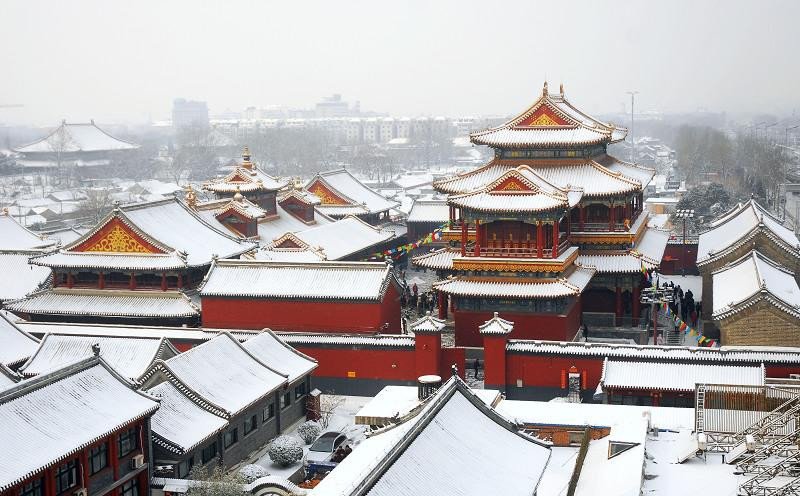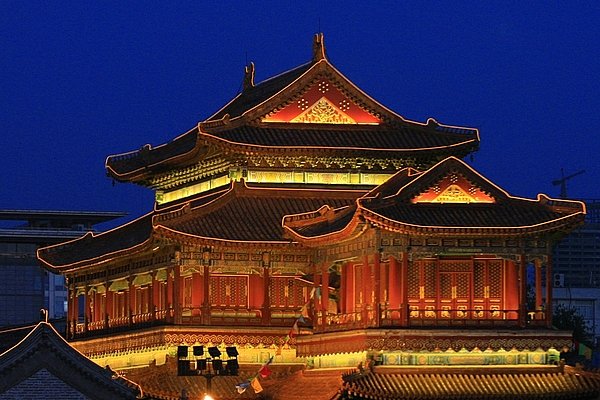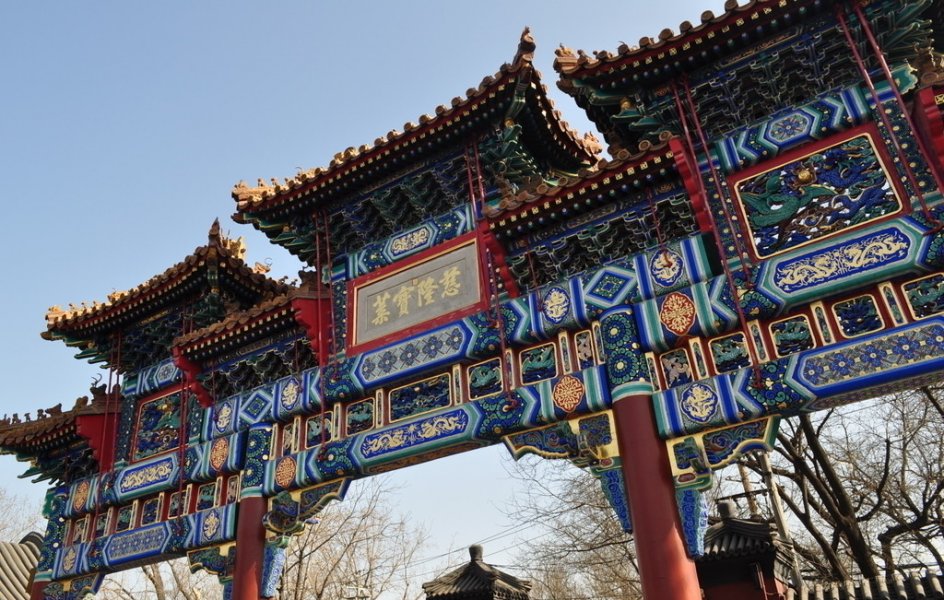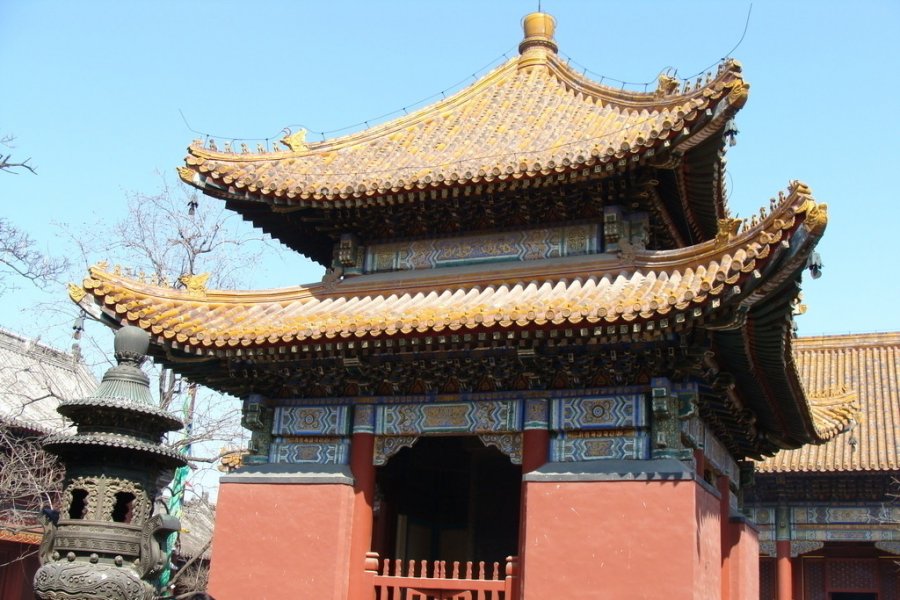The Yonghegong Lama Temple is by far the most colorful temple in Beijing with beautiful rooftops, stunning frescosm, taperstries, incredible carpentry and a great pair of Chinese lions.
Historically, the Yonghegong Lama Temple was a residence for Emperors Yongzheng and Qianlong of the Qing Dynasty. It was built in the 33rd year of Kangxi’s reign (1694) and was changed into a Emperor’s palace in the 3rd year of Yongzheng’s reign (1725). In the 9th year of Qianlong’s reign (1744), it became a temple of the Lama Buddhist sect.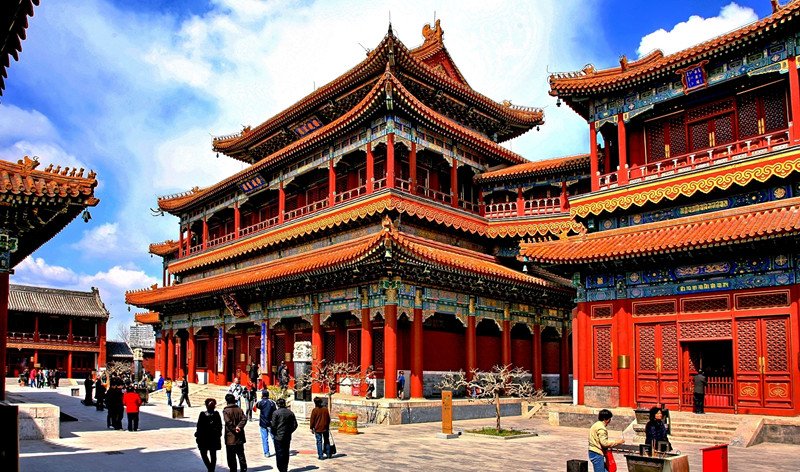
It was originally used as official residence for court eunuchs of the Ming dynasty and was converted to the royal court of Prince Yongzheng during the 33rd year (1693) of Kangxi’s reign of the Qing dynasty. In the 3rd year of Yongzheng’s rein (1725), it was elevated to imperial palace for short stays away from the capital with the name changed to Yonghe Palace of Peace and Harmony. During the 9th year of Emperor Qian Long’s reign (1477), it was change into Lama Temple.
The Yonghegong Lama Temple was made up of three exquisite arches, the Yonghe Door, the Yonghegong Hall, Yongyou Hall, Falun Hall, Wanfu Hall, and the Neicheng Hall. It also has the East and West side halls, the “Four Halls of Scholarship (Medicine Hall, Mathematics Hall, Mizong Buddhist Sect Hall, and Scripture Recital Hall) as well as two display rooms for relics.
The halls of Yonghegong Lama Temple worshipped many Buddhist statues, Tangka (a kind of Tibetan painting) and precious relics. These include sandlewood sculpture of the Five Hundred Arhat (Luohan) Mountain, golden nanmu sculpture of the Buddha niche and the 18-m high sandlewood Buddha statue. The Buddha statue was listed in the Guinness Book of Records in 1910. Among the collection, many were precious gifts presented by the Tibetan elite and senior monks to the Emperor since the 16th century. They are well preserved and have very high historical and artistic value.
